
Swim spa costs vary, but each unit offers the benefits of a pool and hot tub combined. Use this guide to plan your budget.
Follow your hot tub's hidden clues to uncover secret leaks, both big and small


A leaky hot tub can easily deflate your dreams of deep, jet-propelled relaxation. The location and source of the leak determine whether you’ve got a DIY fix-it project on your hands or if you’ll need to call in a hot tub repair pro. Knowing the common sources of leaks and how to spot signs pointing to their exact location are the first steps to finding a leak in a hot tub. Keep reading for six tips to get your hot tub back in working order.
A safety tip to start off—turn off the power to the hot tub before checking for leaks to prevent accidental shock.
There shouldn’t be any rust or water on the outside of the hot tub pump. The pump is at the heart of the hot tub, but time and use take a toll. Over time, seals, joints, and valves can become displaced, loose, or break down, creating slow-growing leaks. Water can then leak along the pump and motor, creating rust or water spots on or around the housing. Check for moisture in the compartment housing as well, which could indicate a leak near the pump.
If you don’t see rust or signs of water on the pump itself, check underneath. Water pooling under the motor could be from a newer leak that hasn’t caused rust yet. Keep in mind that a small amount of pooling can indicate a leak that can cause bigger problems and costly hot tub repairs down the road.
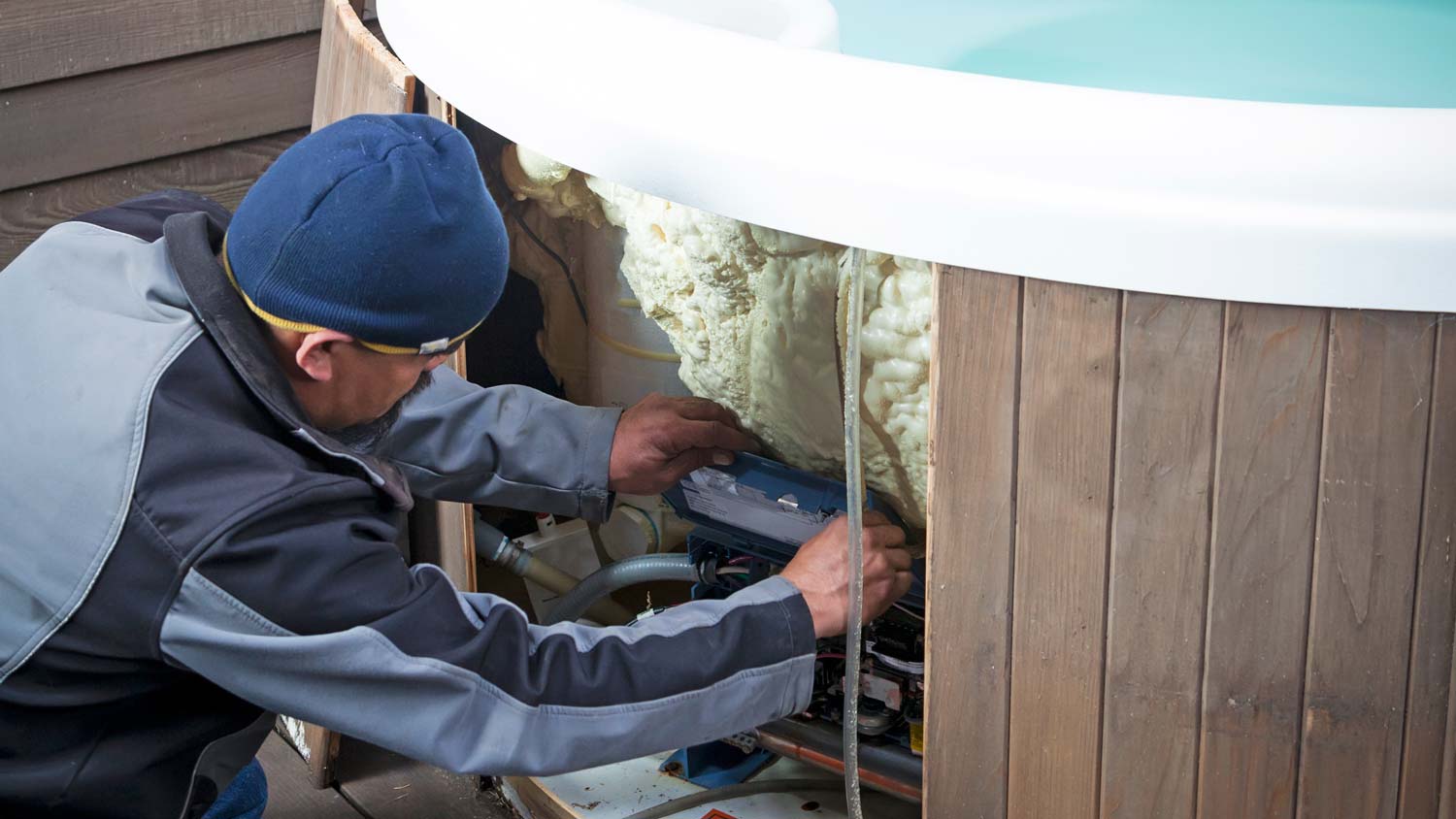
You’ve checked the motor, but take a good look at the equipment compartment. A leak may cause water to leak in places other than under the motor. If there’s pooling or excess moisture in the equipment compartment, there’s possibly a leak somewhere. You might have to do more investigative work to find the exact location and cause.
Check PVC connections and unions. Unions can get jostled loose by vibrations or the swelling and shrinking caused by changes in water temperature. Tightening the unions can sometimes take care of a leak. But you might need to regularly check that joints and unions are staying tight and secure. Only tighten these by hand to avoid breaking the plastic.
If the same union continues to leak, you’ll need to replace it. Another option is to replace the gasket or O-ring and see if that fixes the problem.
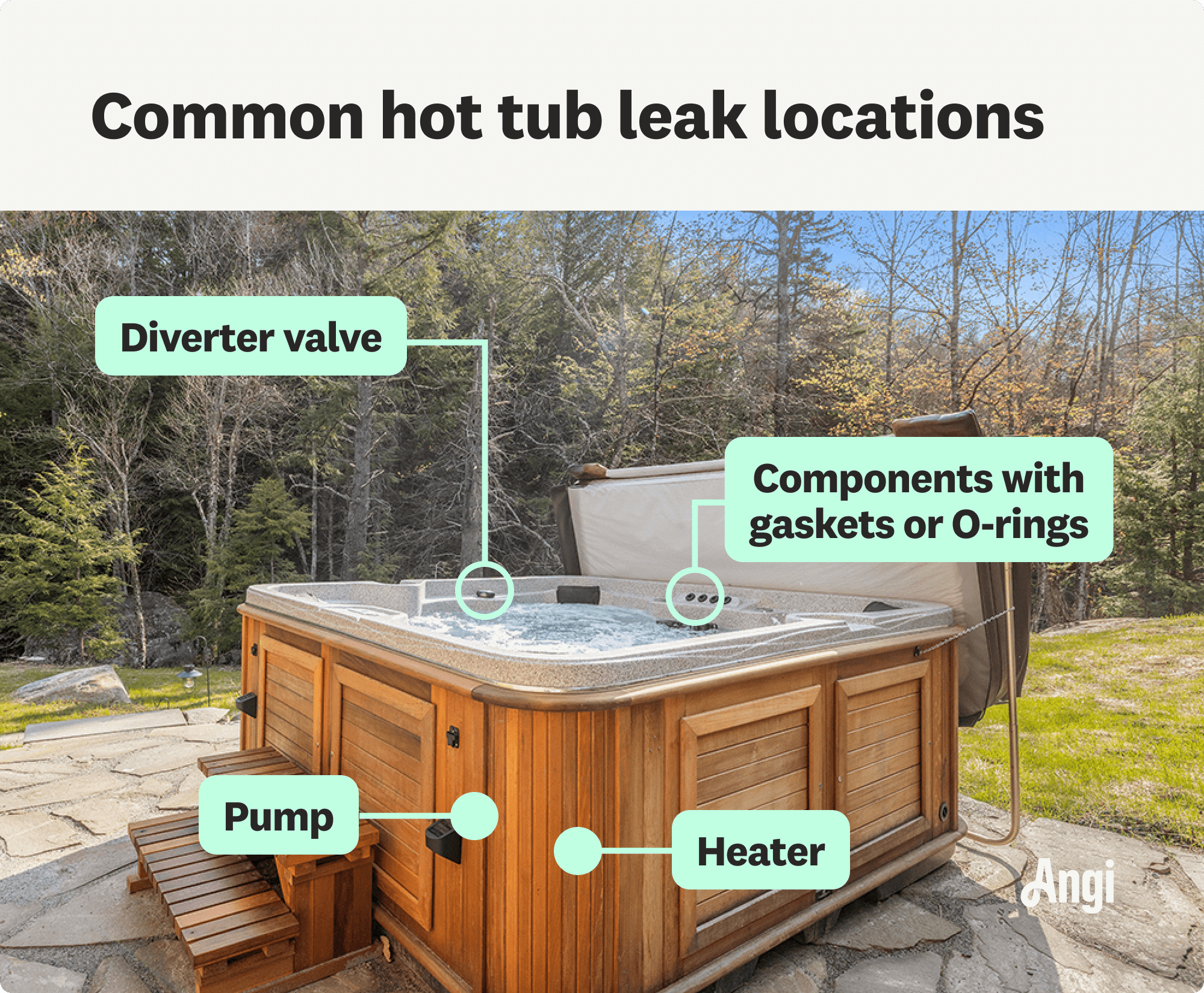
Certain heater parts like pressure switches, plumbing unions, and sensors develop leaks over time. Depending on the configuration of your system, a leak around any of these parts can cause water to collect on the heater tube and lead to rust.
If you see corrosion or pitting, a leak has been going on for a while, and you may need to call a local hot tub repair service. You might be able to replace switches or tighten unions, but in some cases, you might need to replace the hot tub heater—and you’ll need to call in a hot tub pro to help you with this task.
When finding a leak, check around the shutoff, air control, and diverter valves. Not all hot tubs have these valves, so you may need to check your manual if you’re unfamiliar with your hot tub system.
Of these three, diverter valves and shutoff valves are more likely to leak than air control valves because they directly control water. Additionally, diverter valves have O-rings that can get dry or worn out. You can try greasing or replacing the O-ring to gain control over a diverter valve leak.
Shutoff valves—also called gate or slice valves—stop water flow so you can service the hot tub without draining it. Unfortunately, if you have a leaky shutoff valve, the only way to fix it is to cut it out and replace it. Sometimes, you can replace it with a straight piece of PVC pipe because shutoff valves are convenient but unnecessary. You can replace shutoff valves without draining the hot tub, but remember you have to stop the flow of water.
While air control valves are less likely to leak, their O-rings can break or get dry, too. You can often grease or replace an O-ring to fix the problem.
The jet gaskets create a flexible seal against a hot tub’s shell. Over time, exposure to water, chemicals, and pressure can break down the gaskets and lead to leaks. If your hot tub jets aren’t working, replacing the gaskets might stop a leak and get the jets going again.
Any part with a gasket or O-ring (as discussed in the section about valves) can develop a leak as these parts get old and break down. Hot tub lights, chlorinators, skimmers, and ozonators could all contain gaskets and O-rings.
If you checked the more common valves and still haven’t found a leak, check the gaskets and O-rings on these other parts. A regular hot tub maintenance schedule can help you catch failing O-rings and gaskets before they cause a full-blown leak.
From average costs to expert advice, get all the answers you need to get your job done.

Swim spa costs vary, but each unit offers the benefits of a pool and hot tub combined. Use this guide to plan your budget.
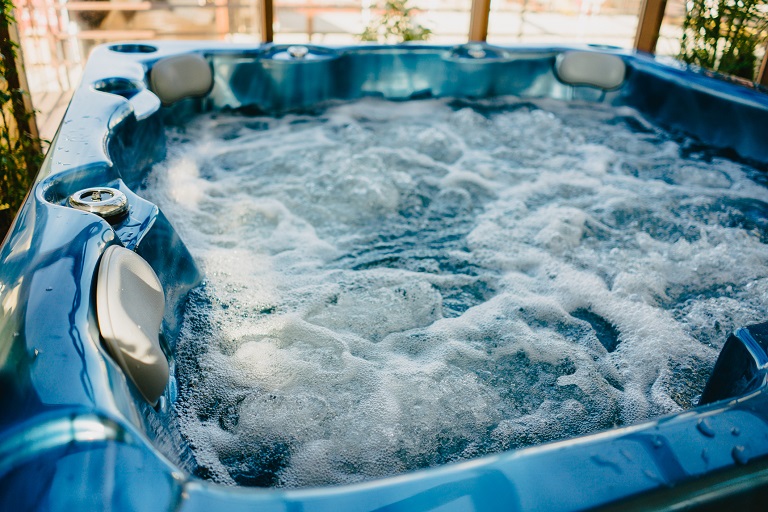
Wondering how much it costs to run a hot tub? Discover average monthly and yearly costs, key factors, and tips to keep your hot tub expenses in check.
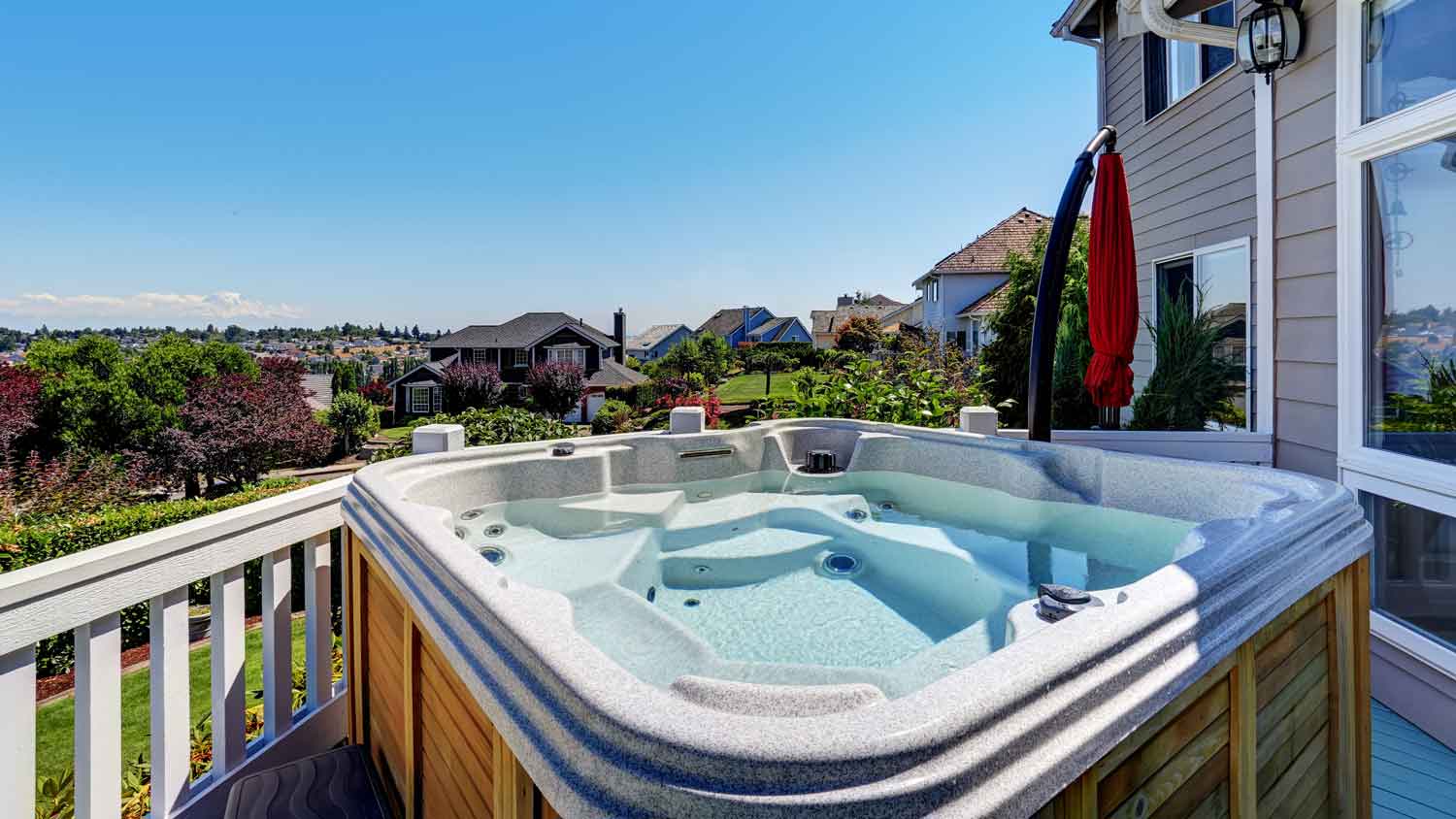
Discover how much a saltwater hot tub costs on average, including installation and ongoing expenses, plus tips to save money and compare DIY vs. pro options.

If you’re looking to get your backyard summer-ready, use this guide to learn pool opening costs, budget appropriately, and how to save money.

If your pool feels gritty, you may be wondering "why is my pool filter blowing out sand?" Here are a few reasons why and what to do about it.
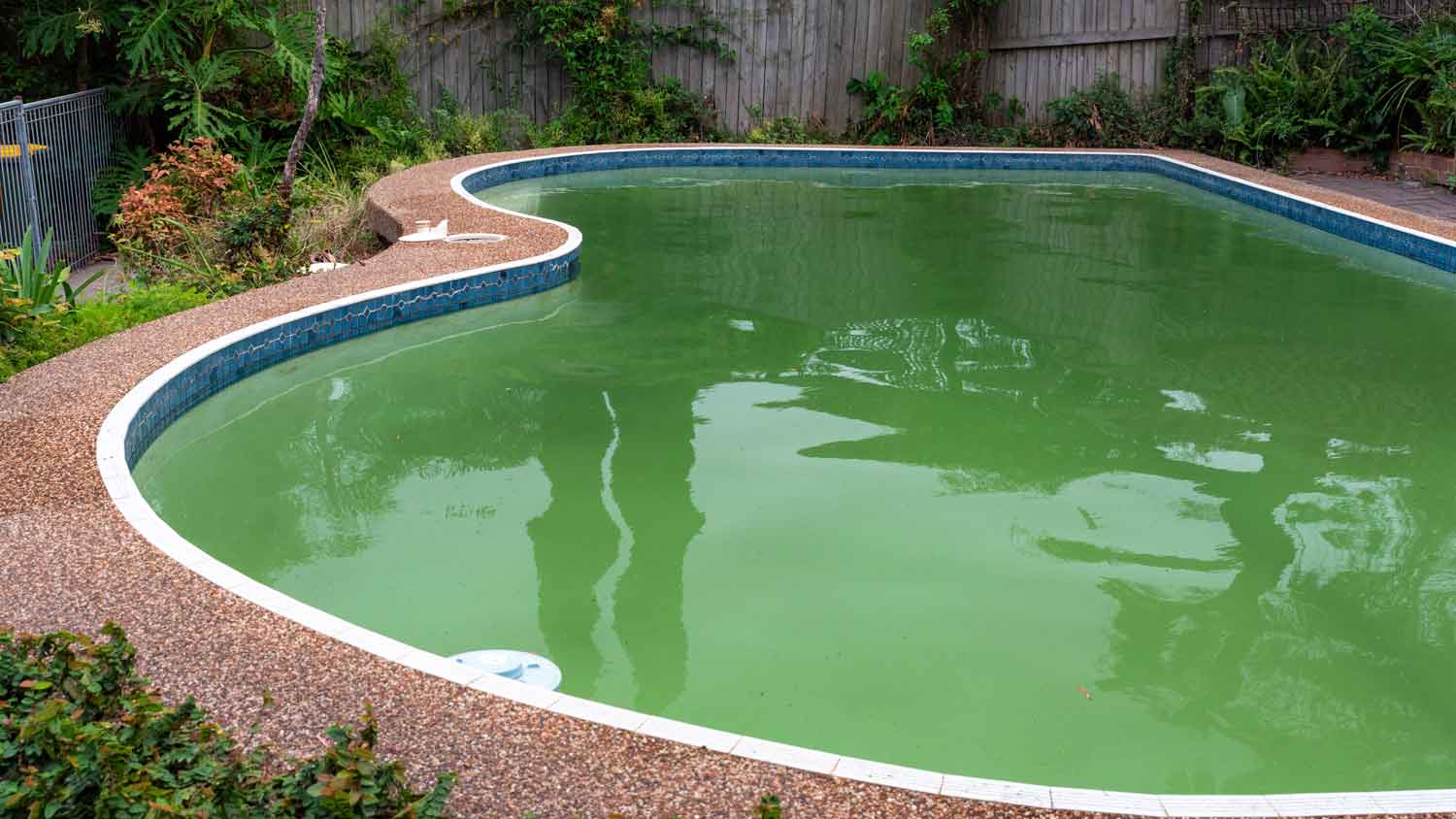
Is murky pool water ruining your summer dip? Learn why your pool is cloudy and how to fix it to get back to swimming fun.